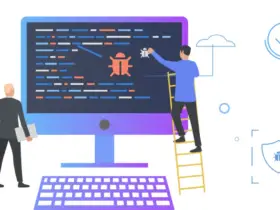

Practical solutions to approaching the design and management of Linux system
About the author
Scott Alan Miller is an information technology and software engineering industry veteran of 30+ years, with more than a quarter of a century on UNIX and Linux. His experience has included companies of every size, in every region of the world, in nearly every industry. Scott has been a technician, lead, manager, educator, consultant, writer, author, speaker, and mentor. Today, and for more than the last 20 years, Scott has led the IT consulting team at NTG. He now lives in Nicaragua
Who this book is for
This book is intended for those IT professionals working with Linux or as system administrators who want to take their craft to the next level. This book is about best practices and so we approach the role and thinking of the system administrator rather than learning individual tasks. This book will challenge how you think and how you approach system administration. This book will not teach you about the tasks of system administration, but it will teach you how to think like a career administrator.
What this book covers
Chapter 1, What Is the Role of a System Administrator?, explains the actual role and mandate of the system administration function and how to apply this to your own role in your career and your organization.
Chapter 2, Choosing Your Distribution and Release Model, goes through how to choose the right Linux variation for your organization (Linux comes in many flavors and styles), understanding the importance of release models.
Chapter 3, System Storage Best Practices, attempts to take you from newbie to master regarding storage, which remains one of the least understood areas of system administration, taking a high-level approach. xiv Preface
Chapter 4, Designing System Deployment Architectures, breaks down assessing deployment approaches and when different models will work for you. Systems do not exist in a vacuum; they are deployed in conjunction with other systems, often needing to interoperate for functionality or redundancy. Combining systems in meaningful ways is complex and can be counterintuitive.
Chapter 5, Patch Management Strategies, looks at patching and updates, which might sound mundane but are at the core of any system task list, and are often more complex than is realized. Good patch management will help protect you and your organization from disasters both accidental and malicious.
Chapter 6, Databases, digs into database concepts and how they apply to the systems realm so that you can provide better support and guidance to your database users. Technically not part of the operating system, database management has historically fallen to system administrators.
Chapter 7, Documentation, Monitoring, and Logging Techniques, looks at strategies for both manual and automated processes for tracking the desired state and current state of our systems.
Chapter 8, Improving Administration Maturation with Automation through Scripting and DevOps, looks at many different ways to approach automation considering practicality and real-world needs in addition to perfect, theoretical approaches. Everyone talks about the automation of system tasks, but many organizations fail to do it.
Chapter 9, Backup and Disaster Recovery Approaches, goes far beyond conventional wisdom and approaches disaster recovery with a fresh eye and modernism to provide ways to make backups easier and more effective than they normally are. The single most important task in system administration is protecting data.
Chapter 10, User and Access Management Strategies, looks at best practices for maintaining users, discusses decision making and user management approaches, and investigates architectures for remote access to the operating system. What good is a system if no one can access it?
Chapter 11, Troubleshooting, looks at how taking a planned, intentional approach to troubleshooting improves resolution speed, reduces stress, and might just find problems that would have been kept hidden otherwise. Nothing is harder than figuring out what to do when something is wrong and the pressure is on0.




























Leave a Reply